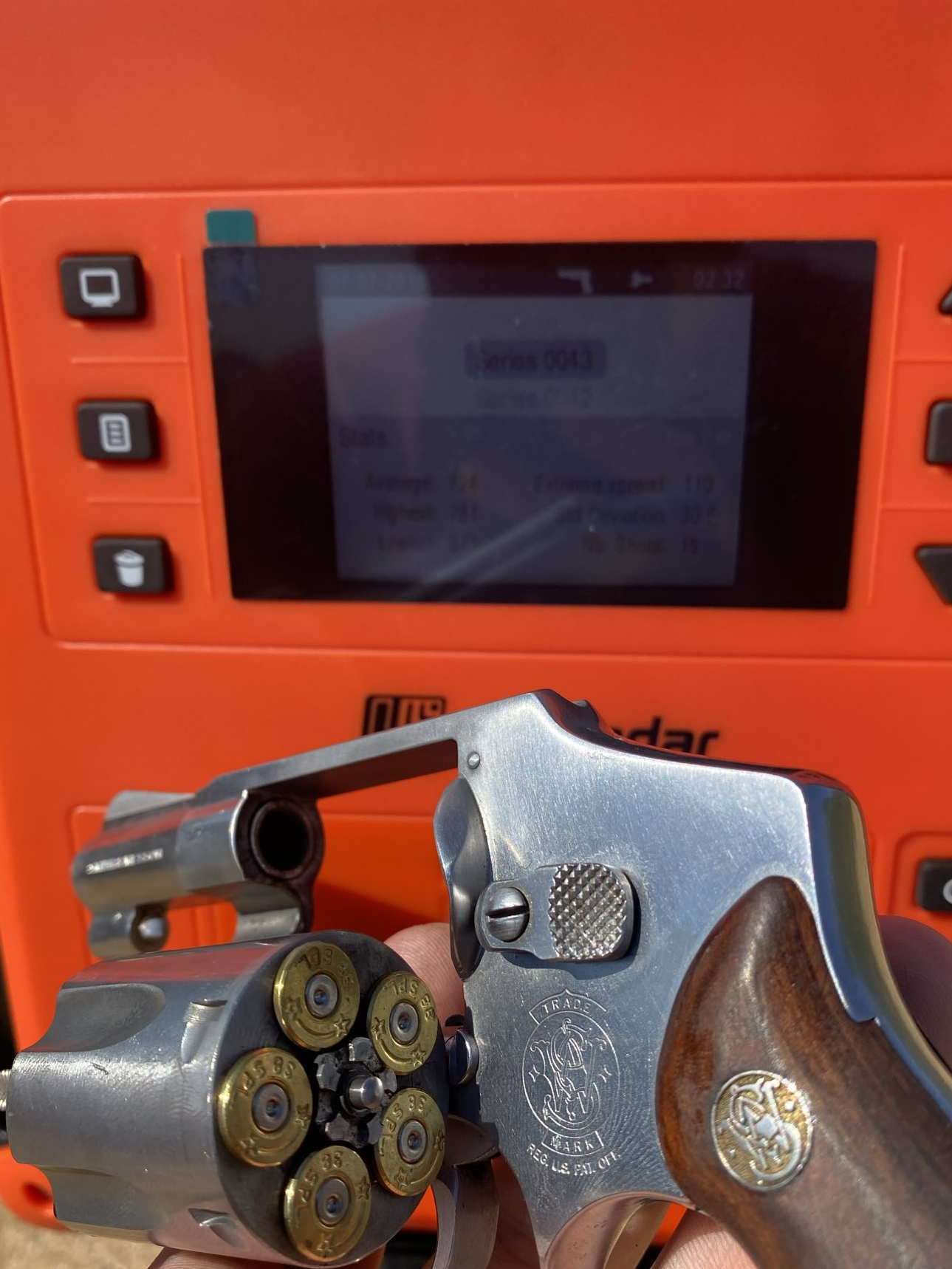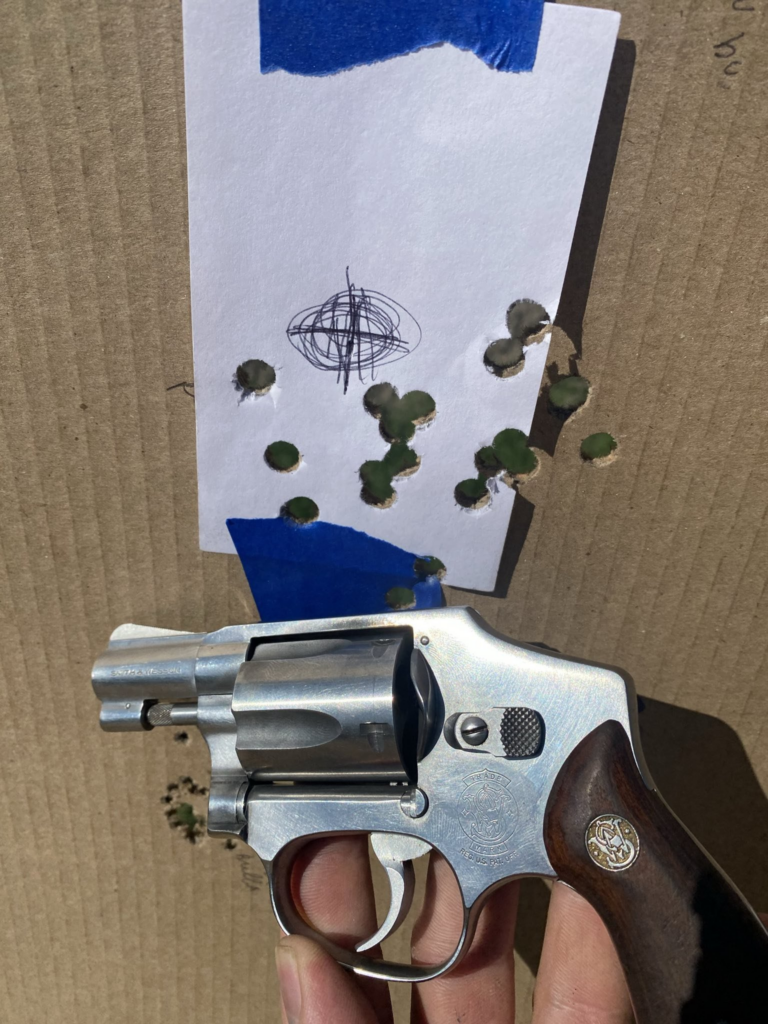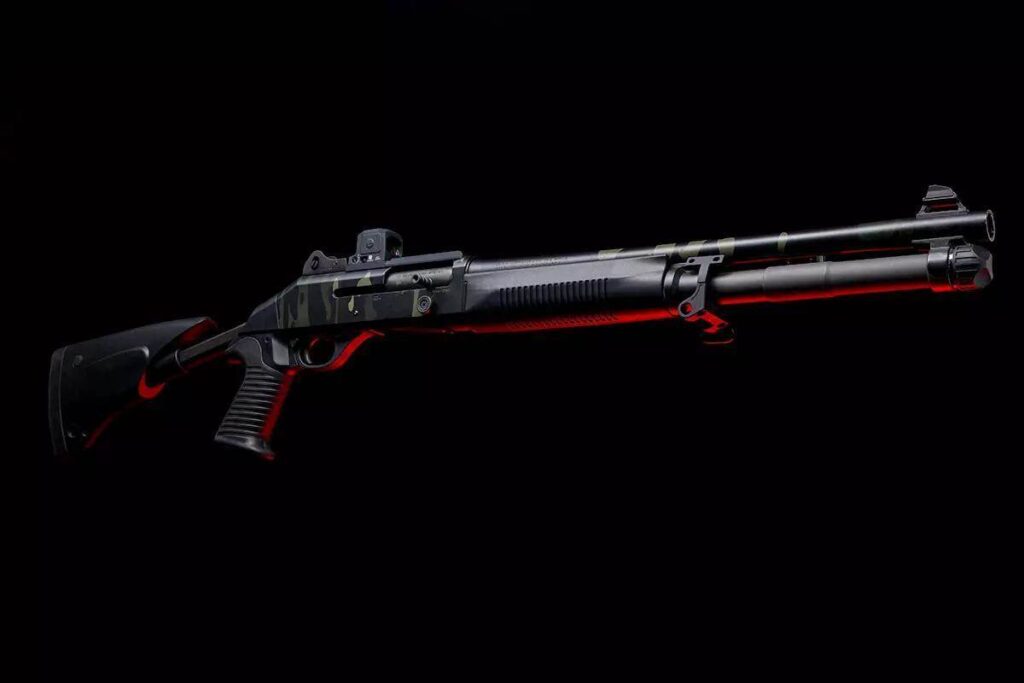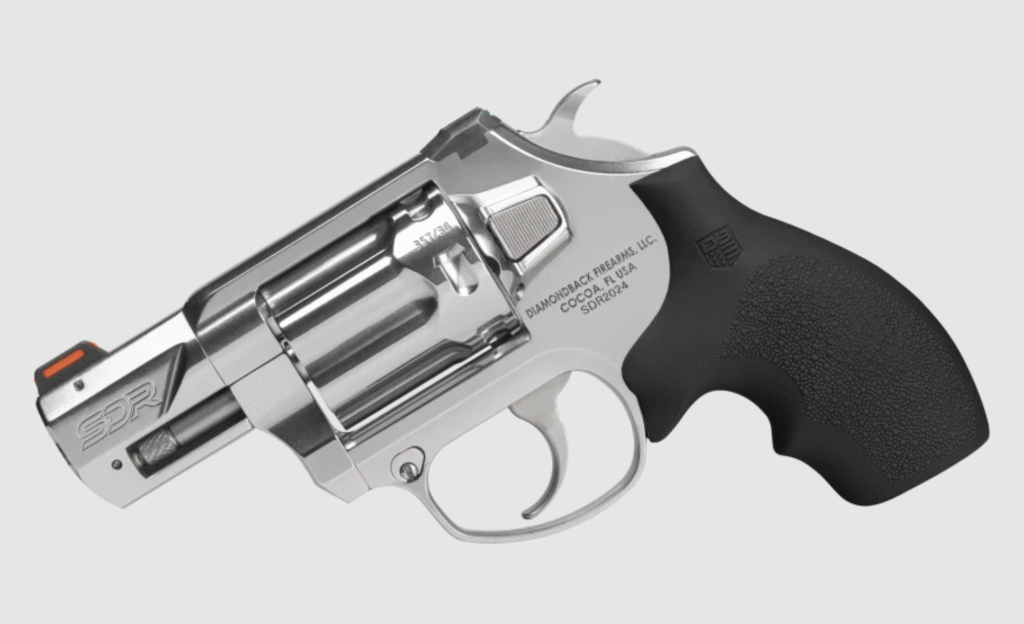In 2022, Georgia Arms Ammunition made some waves across the defensive revolver space after the company launched its 148-grain .38 Special Ultimate Defense Wadcutter load that was tailored for classic Smith & Wesson J-Frame revolvers; these guns are built on S&W’s smallest frame*, hold 5 cartridges, and typically have a 1 ⅞ inch barrel. The creators of the Ultimate Defense wadcutter set out to work up this load to accomplish two things. The first was to make a load that corresponds with a 10 yard point of impact (and thus is regulated to that distance using the fixed .38-caliber Smith & Wesson sights found on J-frame revolvers). The second was to ensure its propellant charge pushes the 148-grain slug with a muzzle velocity of 750 feet per second out of the 1 ⅞ inch barrel to ensure the bullet has enough energy behind to adequately penetrate a target for defensive purposes.
Ultimate Defense Wadcutter & The Model 640: A Perfect Pairing
Travis Pike, my colleague here on GAT Daily already touched on these snub-nosed carry rounds last year. It also happened that a reader and good friend gifted me two 20-count boxes of these defensive wadcutters too. I shot ⅔ of the first box through my Taurus 856 not long after I received them from my friend, so by the time I decided to carry out this informal test, I only had one intact box of rounds available. (This makes me wish I would have had chrono data for that first box). Keeping what Mr. Pike already wrote in, I figured the best thing I could do with them is shoot this box of cartridges at 10 yards with one of my J-frame revolvers while clocking their muzzle velocity with my Labradar chronograph. For this simple evaluation, I used my vintage no-dash Smith & Wesson Model 640. This snub-nosed revolver might as well be the quintessential modern J-frame as it takes after the original Smith & Wesson Centennial (Model 40). Both the Model 40 (and the alloy-framed Model 42) set the tone for how modern Smith & Wesson J-frame revolvers are built–especially because of their “internal” snag-free hammer.

Advertisement — Continue Reading Below
Carrying Out The Evaluation
It’s worth mentioning that both the revolver and cartridges were in a range bag sitting in the hot trunk of a car and then spent an additional 30-45 minutes sitting in direct sunlight (bright, sunny, and a high of 85℉ that day). By the time I got to this mini-test everything was plenty warm. While I do know that Georgia Arms Ammunition uses a lead wadcutter from Zero Bullets (as this was disclosed in a podcast talking about the load), I don’t know what propellant they’re loading these with. It’s fair to point out that even pistol propellants can be affected by temperature, whether the ambient is very hot or very cold. I don’t think that the ramifications of pistol cartridge temperature fluctuations are as critical as those in a precision rifle cartridge context.
From a distance of 10 yards, I posted a 3×5-inch index card vertically. To give me a consistent point of reference for the front sight, I drew a crude circle with my pen. Keep in mind that I was conducting this test in a tactical/sport shooting bay at my gun club, so I shot the Model 640 freestyle and unsupported well into the bay as the targets have to be against the main berm. Once the Labradar was set up, I patiently fired all 20 cartridges downrange. Fortunately for me, the Labradar also captured all 20 fired rounds too.
Ultimate Defense Wadcutter Point Of Impact

Advertisement — Continue Reading Below
I’ll let the picture above do the talking for the “accuracy” results. I’d like to reiterate that I held a six o’clock sight picture while taking these shots. Furthermore, accounting for both the shooter and this fixed sight revolver, one can see that the shots are indeed grouping consistently and are regulated “to the sights.” In this case the nucleus of this 20-round group is just slightly off to the right of the index card’s center.
Muzzle Velocity Data
According to my Labradar, here are the data I got from shooting the whole 20-round box of the Georgia Arms Ultimate Defense Wadcutter load:
- Average MV: 727 FPS
- Highest MV: 781 FPS
- Lowest MV: 671
- Extreme Spread: 110
- Standard Deviation: 30.5
- Shots Fired: 20
(Gun Club Elevation: 719 ft, Temperature: 85℉, Barometric Pressure: 29.20 mmHG, Humidity 94%)
Advertisement — Continue Reading Below

My sample size consists of merely twenty cartridges and my Labradar data shouldn’t be taken beyond face value. If I had access to more of these cartridges I wouldn’t mind having a larger sample size and also shooting them through a different 1 ⅞ inch barrel J-frame I own. Quite frankly, the most important aspect is the fact that these loads do shoot to J-frame sights and are regulated properly for 10 yards. Having defensive cartridges, or even standard revolver cartridges in general match up to a specific revolver’s sights and barrel twist can be an exercise in frustration. It’s my understanding that this was one of Georgia Arms’ primary goals in developing this load.
**Technically the I-Frame is the smallest double action frame size from S&W, but those haven’t been made in a long time.
Advertisement — Continue Reading Below
Special Thanks To R.C. for these rounds and supporting my writing directly and indirectly.















